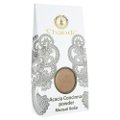 Thanks to ads it’s common knowledge that various skincare products should not disturb skin pH levels. But what exactly is skin pH and why is it so important that it shouldn’t be disturbed? Today, let’s figure out the answers to these questions together.
Thanks to ads it’s common knowledge that various skincare products should not disturb skin pH levels. But what exactly is skin pH and why is it so important that it shouldn’t be disturbed? Today, let’s figure out the answers to these questions together.
Let’s start with a little throwback to your high school chemistry class. pH, historically denoting “power of hydrogen” or “potential of hydrogen”, is a scale used to specify the acidity of basicity of aqueous solutions. The pH value of a solution depends on the concentration of positively charged hydrogen ions and negatively charged hydroxide ions.
Pure water contains equal amounts of hydrogen and hydroxide ions, 10-7 moles per litre (mol/L), which corresponds to a pH of 7. Pure water and its pH level are considered neutral. Acidic solutions contain more hydrogen ions and have pH values lower than 7, whereas basic solutions contain more hydroxide ions and have pH values greater than 7.
pH may range from 0 to 14, with 0 being the most acidic, 7 being neutral, and 14 being the most alkaline. However, it should be noted that very strong acids can have a pH less than 0, and very strong bases can have a pH greater than 14. Nevertheless, the pH of most solutions falls within the range of the scale.
The average pH of healthy human skin may vary from 5.2 to 5.7, which means that it is slightly acidic. It contributes to the skin’s natural protection against various pathogenic microbes and harmful environmental factors.
The acidic pH of the skin is caused by the skin’s protective hydro-lipid barrier consisting of sebum (skin oil), sweat, and organic acids produced during metabolism. If the hydro-lipid barrier is intact, your skin is reliably protected from the environment. Its damage, on the other hand, disturbs skin pH and may lead to various skin problems.
Factors that may damage the skin’s protective barrier and disturb its pH include hard or chlorinated water, seawater, harsh detergents, sun exposure, air pollution, cosmetics that do not match your skin type, and an unbalanced diet.
If skin pH becomes more acidic, the skin gets dry, which may lead to microcracks and infections. If skin pH becomes more alkaline, it usually results in increased production of skin oil, which may lead to clogged pores, comedones and pimples, and inflammation.
How to prevent such problems? Of course, the best solution would be to completely eliminate the effects of various factors that can change skin pH, but it is simply impossible. You can change your skincare routine or diet, but you can hardly do anything about air pollution or chlorine levels in a public swimming pool. So let’s focus on the things you can do to keep your skin pH normal.
For example, if you choose the right skincare products that match your skin type (especially facial cleansers), they will help to maintain skin pH and keep the hydro-lipid barrier intact. Here are a few more tips on maintaining skin pH.
After washing your face with alkaline products (such as soap), use a balancing toner with an acidic pH
As a rule, tap water has a pH of around 8, and pH levels of facial cleansers with anionic surfactants can range from 6 to 10. To neutralise such a powerful alkaline effect and restore the original pH of your skin, you need to use a balancing skin toner with an acidic pH of about 3 or 4.
Consider the pH of your skin type when choosing skincare products
As we’ve already mentioned above, the average pH of normal skin ranges from 5.2 to 5.7. However, oily and dry skin have slightly different pH levels. The pH of oily skin may range from 5.7 to 7.5 (less acidic), while the pH of dry skin may range from 3 to 5.2 (more acidic). Therefore oily skin needs products that will lower its pH, while dry skin needs products that will increase it.
Maintain normal skin pH from the inside
Eating a healthy diet helps to normalise skin pH, so if you want to have clear, smooth, firm and healthy skin, you need to eat more fresh fruit and vegetables, wholegrain cereals and fermented dairy products. You should also avoid too hot, salty or sweet foods, as well as drink enough water during the day.
Skincare Products with Different pH for Different Skin Types
Chandi Shikakai Powder, 100 g |
Comex Natural Facial Cleansing Gel for Dry and Normal Skin, 150 ml |
